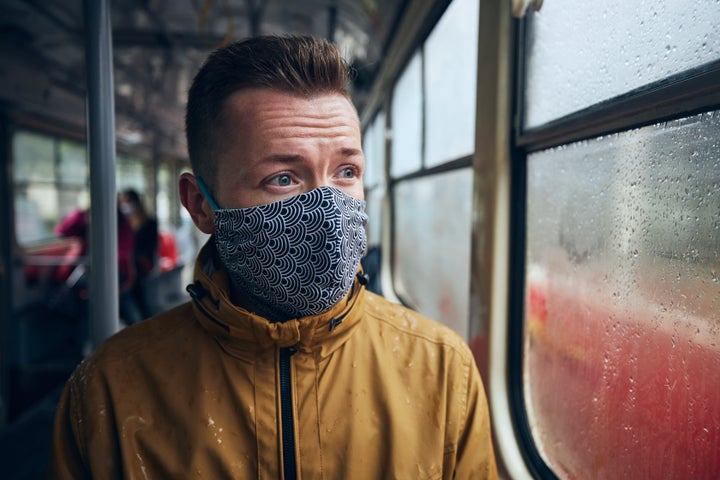Face masks and covers should be replaced with a fresh one if they become damp – but not enough people know this.
Scientists are urging the government to release a public health campaign letting people know their masks can be impacted by the wet weather. Because, put simply: having a wet mask reduces its effectiveness.
After the recent bout of storms, Tim Spector, professor of genetic epidemiology at King’s College London, told The Times: “It would now be useful if clear advice were issued to the public. Masks need to be changed regularly and this is particularly important to understand in damp and wet weather.”

Disposable surgical masks, which many people wear, are particularly susceptible to the bad weather. Paul Hunter, an infectious diseases expert and professor in Medicine at University of East Anglia, previously told HuffPost UK they’re “essentially made out of paper”.
In the center of the masks is a material that’s better at trapping viruses, he explained, but if that gets wet, damaged or displaced, the mask becomes “useless.”
It’s important to remember your breath alone on the mask will be enough to slowly disintegrate it. A general rule of thumb is that they should be replaced after three hours regardless, Hunter said.
Other masks such as the N95 mask, as well as cloth face coverings, are also more vulnerable in damp weather. Government guidance states a person must change their face covering “if it becomes damp or if you’ve touched it.”
The World Health Organization’s guidance on face masks also urges people to “replace masks as soon as they become damp with a new clean, dry mask.”
It’s best to take a few spare masks out with you, just in case.